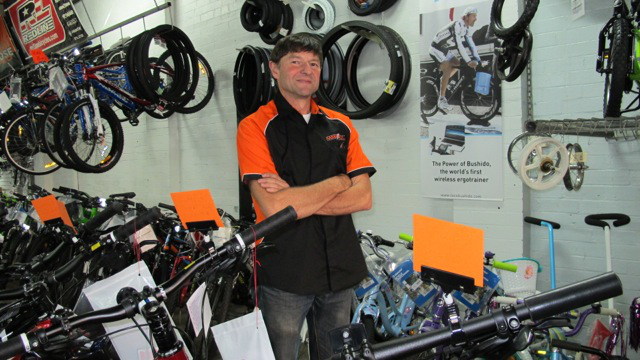The reasons for cycling vary as much as the chosen financial outlay on the equipment to pursue it, according to one who knows the game from the inside, Darryl Pursey, proprietor of Lismore-based Harris Cycle Co.
A long-time cyclist himself, Darryl said that “acceptable entry level bikes” start at around $400, while the marked trend is for the high-end, carbon fibre bikes whose weight is as minimal as the cost is hefty, ranging from $3000-$3500.
It might be noted that both ends of the spectrum are ‘Made in China’. Those wanting bikes from Europe or the USA should make sure their credit cards are well primed.
Established in 1918 and still going strong, the shop is a cycling cornucopia. According to Darryl the quality of bikes, like computers, as he put it, has continued to improve over the years.
In a reference to the rumoured fragility of carbon fibre, he said that, “Even in my day, steel frames broke, so there’s nothing new about that.”
As with other products - again, computers is a good comparison - fashion has an influence on demand. Carbon fibre frames are all the go these days, assuming you can afford them. Their lower weight is equated with a less demanding ride, and the branding might just help too. But there are potential pitfalls – see the adjacent articles.
In regard to safety, Darryl said, “I feel more secure here than on a shared cycleway in the city,” explaining that with less distractions he can keep a sharper eye out for other riders and potential hazards.
While he’s had the occasional stack, he has never broken a bone, but feels that for those who cycle-commute, an accident may be “only a matter of time”, and the same applies to those who ride on highways.
Asked for tips, he advocated appropriate equipment, both bike and clothes, and proper lights. Darryl suggests group cycling, the reason being that a pod is more likely to be visible to other traffic, and consequently “respected”.
The law decrees that cyclists can ride two abreast, although on our country roads, discretion is the better part of valour, and riding single file, or moving (cautiously) onto the verge is advisable if cars need to pass.
Darryl calls this “two-way etiquette”, although common sense may be another way of putting it.
Timing is another key factor: he advises not riding in peak hour. Moreover, Darryl never rides in the Lismore CBD, or other centres, because people are simply not cycle savvy.
Let’s hope this good advice from a master influences more people - cyclists and drivers – to take heed, and that fewer of the former end up in an emergency department, and fewer of the latter face the anguish that follows a collision with a cyclist that might well have been avoided.
















